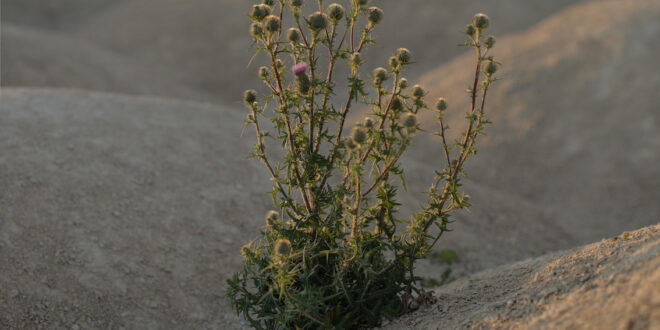Gardeners love a challenge, and if you find the only land available to you for gardening is sandy, a challenge is certainly what you can count on. However, it doesn’t mean you can’t hope to turn your plot into a productive and attractive landscape – far from it! But it does mean you won’t be able to do so overnight.
Sandy ground comes with its own peculiar set of challenges, and they’re all largely to do with the structure of the dirt you’re dealing with. All dirt is made up of particles, and believe it or not, sand particles are larger than most. They also have limited surface area, which means they can’t readily absorb moisture. The upshot is, rather than holding onto moisture for long enough for plant roots to absorb it, water percolates rapidly through the growing medium, and the ground is dry again in no time at all. To complicate matters further, as the moisture quickly drains away, it flushes through any valuable nutrients present in the garden.
Sandy soil is also lacking in organic matter. Organic matter consists of decaying material such as leaves, roots, grass, animal manure, and vegetable waste. Although it forms just a very small part of our garden soil (just 5 to 10 percent) it is absolutely vital to plant health. This is because it acts like a sponge to soak up and hold onto moisture. It also contains valuable plant nutrients, and it provides a home to the microorganisms that break it down as they feed on it. These microorganisms interact with the roots of our plants to keep them healthy and well nourished.
It would seem, at first glance, all a gardener needs do to turn their ‘sand’ into soil, is to provide lashings of moisture, and loads of organic material. To some extent, that’s true, but it’s how you go about doing this, that counts. Organic material is essential, and it should be provided in the form of well-made compost. However, sandy gardens gobble up organic matter much faster than other soil types – and it all comes back to soil structure.
Because sand particles are large (relatively speaking), and because they don’t ‘stick together’ as do, say, particles of clay, there are lots of gaps between them. These ‘gaps’ contain air, and air contains oxygen. While oxygen is healthy for plant roots (without it they couldn’t survive), it is also welcomed by the microorganisms in our soil, which need to breathe. The more oxygen in the soil, the more microorganisms get to work breaking down organic matter. Which is why, in sandy soil, your organic material doesn’t last long.
As for simply adding loads of water to our sandy soil, this isn’t a quick fix, either. No matter how much you soak the ground, the moisture simply won’t stay in the root zone long enough for your plants’ roots to access it. So, what is a gardener to do to create a healthy growing environment in sandy conditions? The answer is ‘plenty – and with patience!’.
Organic matter, in the form of compost, is a must. But instead of adding it just once, and digging it in well, it will need to be added on a once- or twice-a-year basis (aim to add a depth of 15 cm of organic material every 12 months). In order for your plants to make the best use of it before it disappears, dig it in to a depth of no more than 20 centimetres, so plant roots come into direct contact with it right away. On the other hand, if you are planting trees into sandy soil, depth is important when it comes to adding organic material. Dig compost, along with a bucket or two of clay (to hold in moisture,) into a planting hole 2 to 3 times the size of the root ball of your tree.
When it comes to delivering moisture to your sandy-soil plants, ‘slow-and-steady’ is the answer. Because the soil isn’t capable of retaining moisture for very long, your plants’ roots will need to have an ongoing supply of it, and this is best achieved by drip irrigation. Adding a mulch to the surface of your sandy soil will also help keep the growing medium cool, and help slow down evaporation.
As well as adding organic material once or twice a year to your sandy growing medium, you may like to consider adding garden biochar. This special material is an additive which, although it is organic, won’t break down in the short term. And as it is extremely porous, it also has the ability to hold onto moisture.
Sandy soil can be turned into a productive growing space. And until you’ve completed the task to your satisfaction, you can always enjoy growing plants that enjoy the environment you already have!










Join the Discussion
Type out your comment here:
You must be logged in to post a comment.